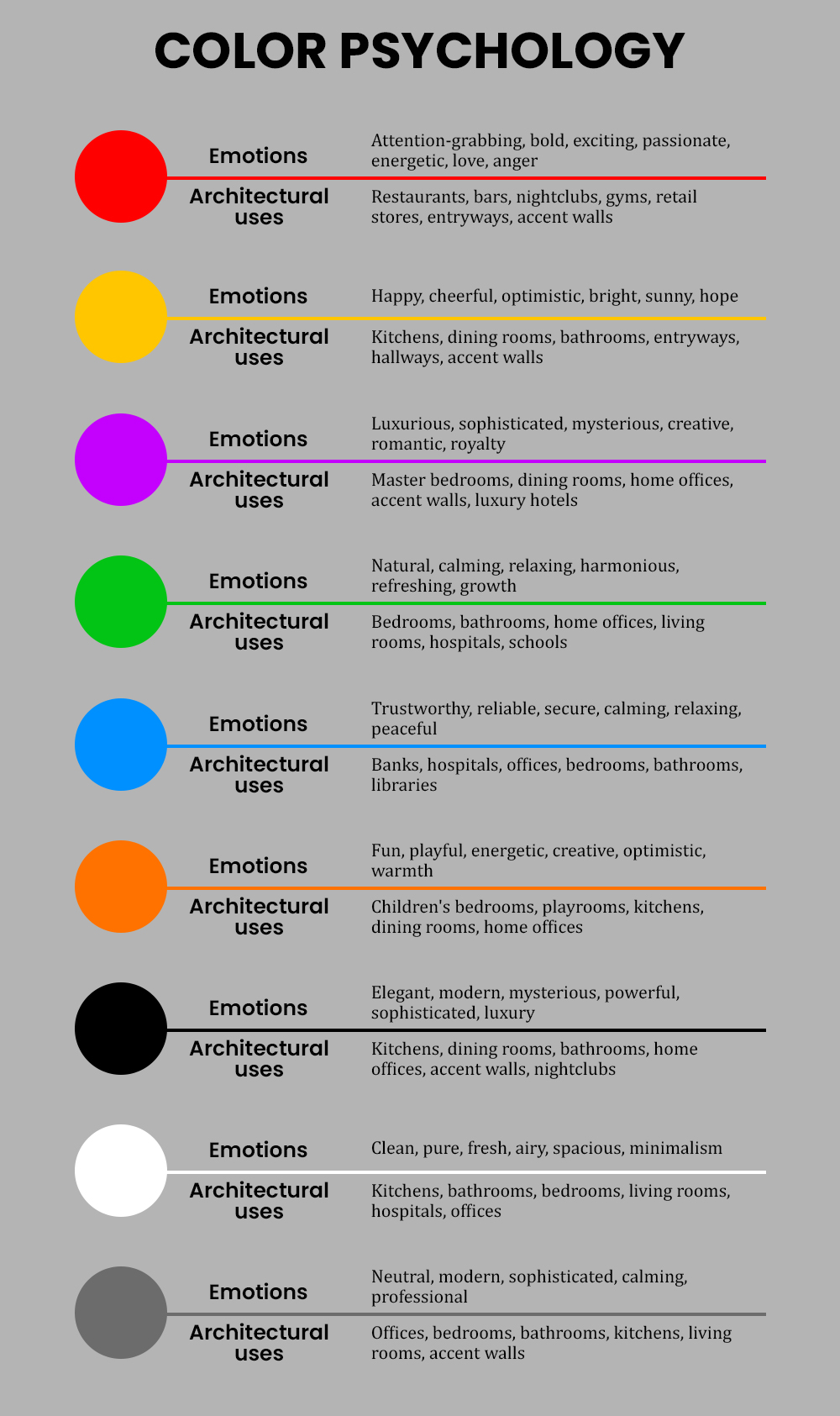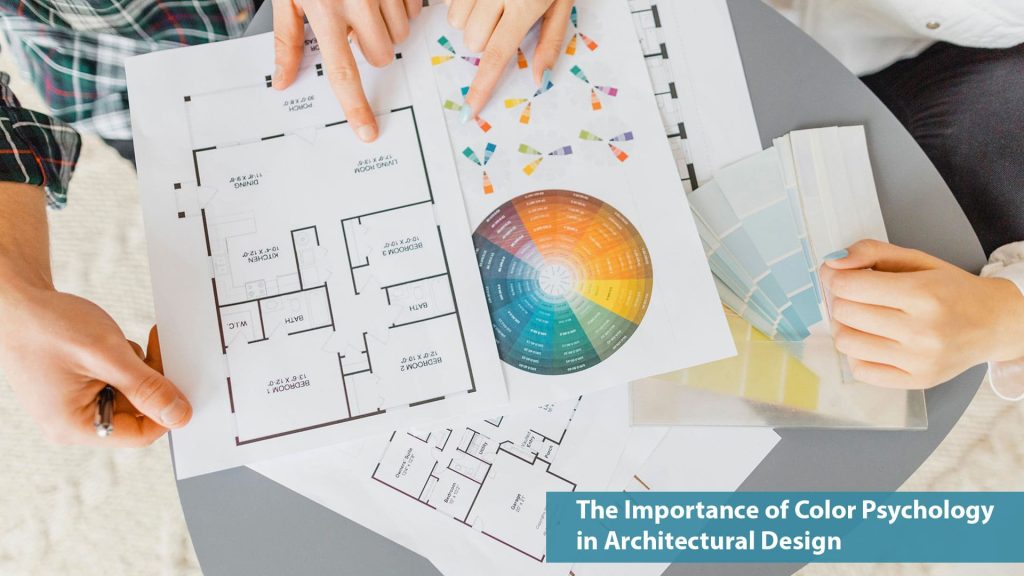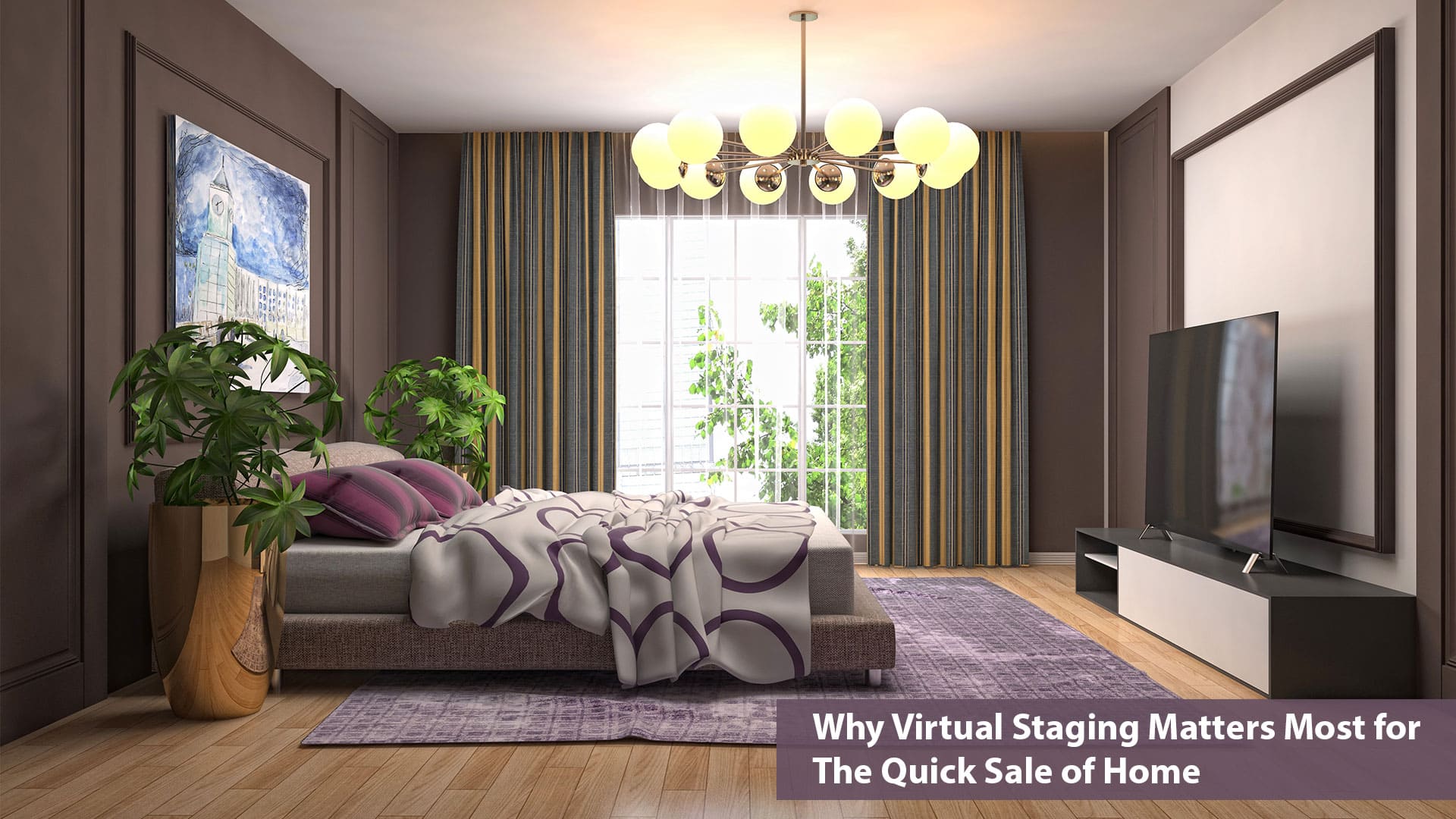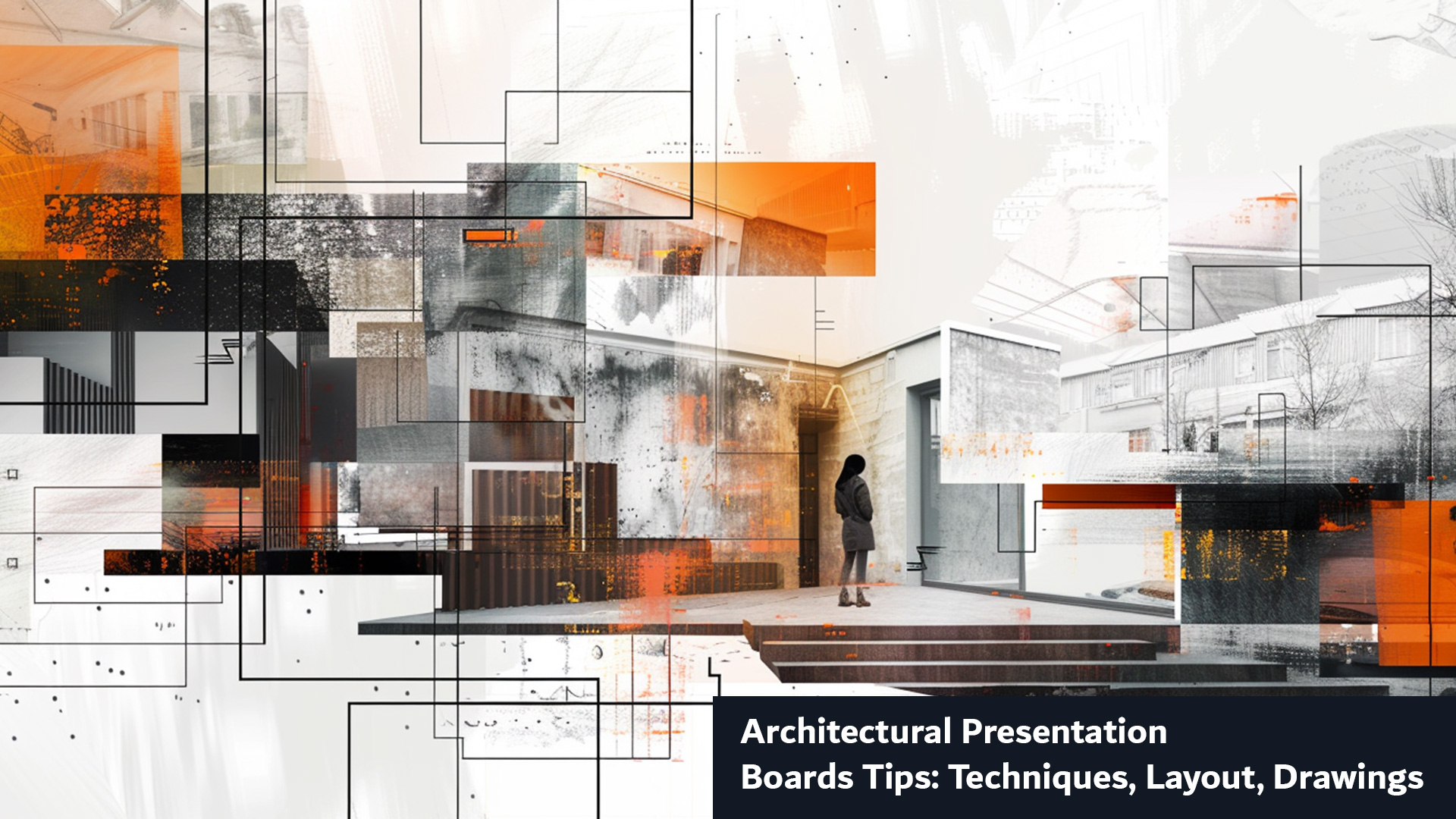Have you ever felt happy in a bright yellow room or calm in a blue space? Did you? Yes! Colors play a crucial role in our lives, evoking emotions, influencing moods, and shaping our perception of the world. When it comes to architectural design, color psychology turns out to be an essential factor in creating spaces that are aesthetically pleasing and evoke the desired emotions. From the hues on the walls to the tones of the furniture, every color choice conveys a distinct message and creates a specific vibe. So, what is color psychology in architecture? And how does it affects our perception? Keep reading to unveil some more interesting and vibrant secrets to color psychology.
What is Color Psychology
A color is indeed the first factor that causes our perceptions of likes and dislikes towards anything. Each color has a vibe associated with itself. Here’s How. While warm colors (like orange, red and yellow) are considered as cheerful, exciting, and stimulating while cold colors (like blue, purple, green) tend to offer a calming and sedating vibe. Each color from the color palette offers a triple action on everyone:
- Catches attention: Every color stands out and grabs our attention in its own way.
- Makes you feel something: Each color can make us react or feel a certain way. For example, red might make us feel excited, while green might offer a tranquil and refreshing feeling.
- Every color Symbolizes something: Colors are also related with meanings and symbols. For instance, green often represents nature or growth, while yellow can symbolize happiness or energy.
What is Color psychology short note?
Colors directly impact our moods and emotions. Different colors can do different things to how we feel when we’re in a room. That’s what color psychology is all about – understanding how colors can change how we feel and behave in different spaces.
The Interconnection: Color Psychology in Architecture
Colors in architectural design are not chosen arbitrarily; they are carefully selected to reflect the purpose and function of a space! Each color has its own unique meaning and vibe associated with it. For instance, warm colors tend to evoke feelings of energy, passion, and warmth. So, these hues are often used in spaces where social interaction and stimulation are desired, such as restaurants or entertainment venues.
On the other hand, cool colors have a calming effect on the mind and body. These shades are frequently found in spaces where relaxation and tranquility are essential, such as bedrooms or spa facilities. Understanding the relationship between colors help architects and designers create harmonious compositions that align with the intended purpose of the space. Would you like to check on some more examples?

The things are much clear now. Aren’t they? Let’s move ahead and understand the importance.
What is the Importance of Color Psychology in Architecture?
Psychology of color in architecture significantly influences the design, shaping the way we experience and interact with spaces. Let’s have a look at some major benefits of using color psychology in architectural design:
- Improve the mood and well-being of occupants: Different colors can evoke different emotions, such as happiness, calmness, or energy. By choosing the right colors for a space, architects can create spaces that make people feel good. For example: Vibrant and energetic colors like red and orange can be used in recreational spaces or gyms to boost energy levels and encourage physical activity.
- Increase productivity and creativity: Certain colors, such as yellow and green, have been shown to improve productivity and creativity. By using these colors in offices and other workspaces, architects can help people to be more productive and creative. For example, studies have shown that the color blue has a calming effect on the mind, making it suitable for office spaces where focus and concentration are crucial. By using blue as the dominant color, architects can create an environment that promotes productivity and reduces stress levels among employees.
- Creating Emotional Connections: Colors have the power to evoke emotions and create strong connections with individuals. Architectural design that incorporates color psychology can elicit specific emotions and responses from occupants. For example, using warm and inviting colors in a restaurant can stimulate appetite and create a welcoming atmosphere. Likewise, incorporating soothing and serene colors in a healthcare facility can help reduce anxiety and promote healing.
- Influencing Perception and Spatial Experience: Colors can also influence the perception of space and alter our spatial experiences. Light colors, such as white or pastels, can make a small room appear larger and more open. Conversely, dark colors such as blue can create an intimate and cozy ambiance in larger spaces. By manipulating color schemes, architects can manipulate the perception of size and shape, enhancing the overall spatial experience.

Cultural Perception of Color Psychology in Designing Spaces
The perception of color psychology varies among individuals and cultures. While certain colors may evoke specific meanings universally, cultural, and personal associations can also shape our perception of colors. Different cultures attribute varying meanings to colors. For example, in some cultures, white signifies purity, while in others, it symbolizes mourning. Additionally, individuals might have personal associations or preferences with specific colors based on their experiences or upbringing. Architects and designers must consider these cultural nuances and individual preferences when incorporating color psychology in their designs. Conducting thorough research and understanding the target audience can help ensure that the chosen color schemes resonate positively with the occupants and align with their cultural and personal associations.
Renderspoint: Perfecting Your Dream Space
When it comes to visualizing architectural designs and their color schemes, Renderspoint- the best 3D rendering company London, provides a comprehensive solution. With their state-of-the-art technology and expertise in architectural visualization, Renderspoint can make you see the impact of color psychology in your design before it becomes a reality. Through realistic 3D renderings, Renderspoint enables architects and designers to make informed decisions about color choices, ensuring that the final design evokes the desired emotions and creates the intended atmosphere. Make your architectural dreams a reality with the power of color psychology and the expertise of Renderspoint. Contact today to bring your vision to life!
Bottom Line
Color psychology plays a significant role in architectural design by influencing emotions, creating connections, and shaping spatial experiences. The careful selection and implementation of colors can enhance functionality, productivity, and the overall well-being of occupants. By understanding the impact of color on the human psyche, architects and designers can create spaces that not only look visually appealing but also evoke desired feelings, making a lasting impression!








